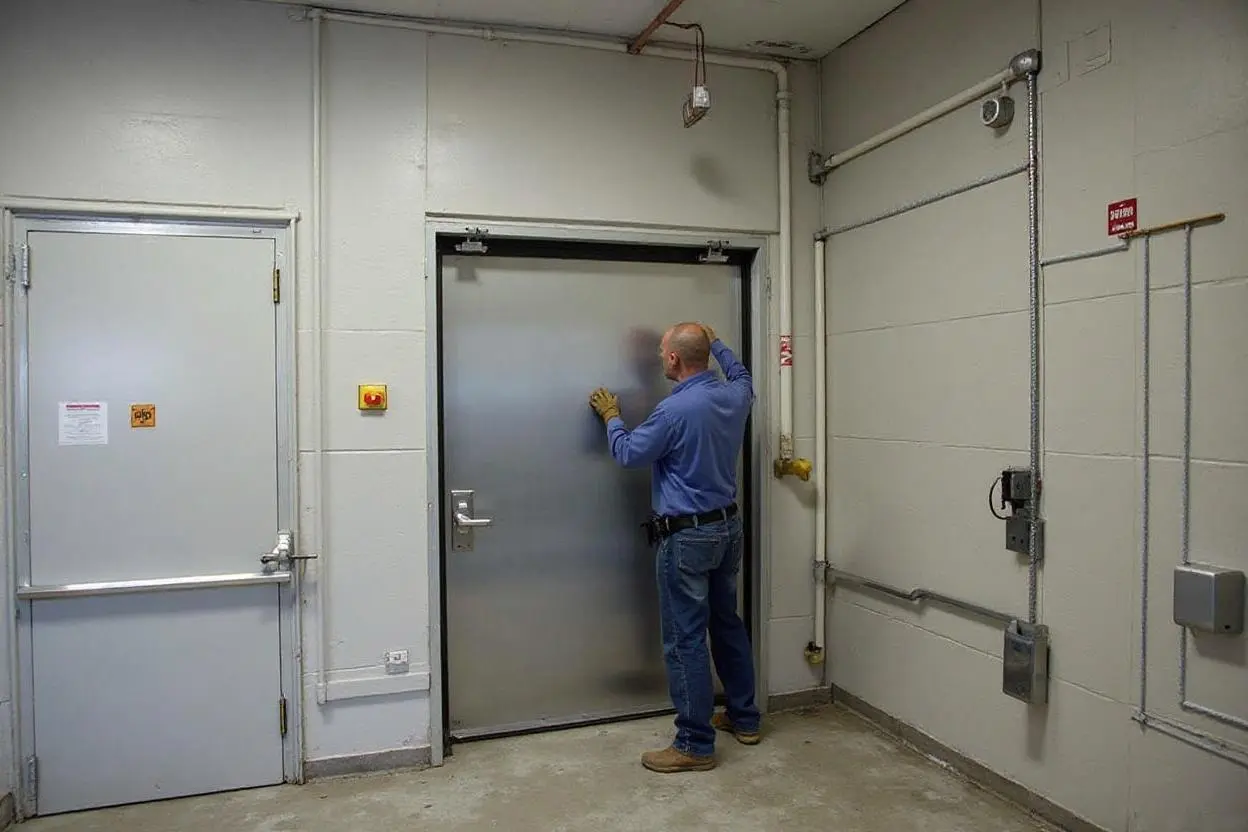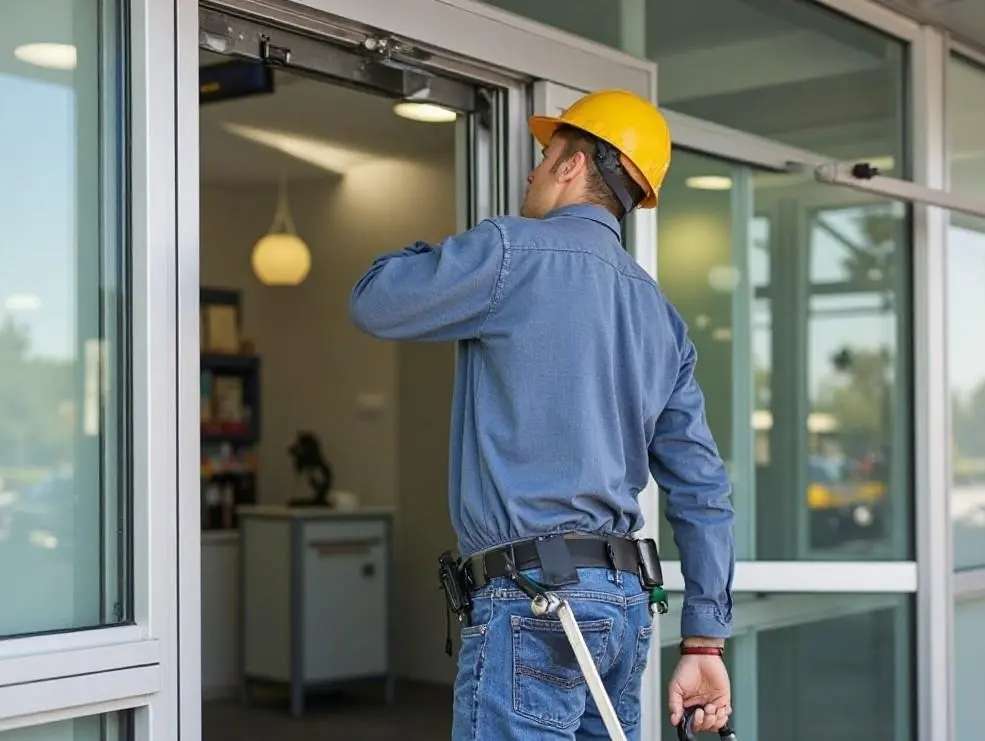What Is The Life Expectancy Of An Automatic Sliding Door?
Automatic sliding doors work hard in Buffalo’s climate. They cycle thousands of times per week, deal with lake-effect salt, and see heavy foot traffic during hockey nights and morning rushes. Owners often ask one practical question: how long should a well-installed automatic sliding door last? The honest answer depends on use, environment, and the quality of automatic door maintenance. With the right care, most commercial-grade systems in Western New York deliver 10 to 15 years of service, and many reach 20 Buffalo, NY years with periodic overhauls of high-wear parts.
How lifespan is measured
Manufacturers rate sliding door operators by cycles rather than years. One cycle equals one open and close. Light-duty sites in residential lobbies may run 50,000 to 100,000 cycles per year. Busy hospitals, supermarkets, and transit hubs in Buffalo can exceed 500,000 cycles annually. A common operator is built for several million cycles before major refurbishment. Years on the calendar only matter in the context of cycle volume, winter exposure, and how consistently the door gets inspected.
What typically fails first
Based on field work across Erie and Niagara counties, early wear usually shows up in predictable places. Guide rollers flatten. Nylon carrier wheels crack. Belts stretch. Sensors drift out of aim. Brushes on older motors wear down. Tracks gum up with salt and grit. These issues do not mean the door is at end of life; they are the consumables of the system. Replacing them on schedule protects the expensive parts, such as the operator motor, gearhead, and control board.
The Buffalo factor: weather and salt
Buffalo winters shorten the service life of unmaintained doors. Salt spray draws moisture into tracks and corrodes hardware. Freeze-thaw cycles cause minor misalignments to grow. Doors near exterior vestibules at Elmwood Village storefronts or on windy corners downtown need closer attention during December through March. Simple steps make a big difference: keep thresholds clean, wipe photoeyes, and check weather seals so the operator does not fight drafts all day.
Typical lifespan by use case
- Low to medium traffic, indoor lobby or office: 12 to 18 years, with a belt and roller change every 3 to 5 years.
- Retail entrance with steady daily traffic: 10 to 15 years, with sensor recalibration twice a year and periodic track and carriage replacements.
- Healthcare or 24-hour facility near exterior exposure: 8 to 12 years before major operator rebuild, assuming quarterly service and frequent sanitation-related sensor checks.
These ranges reflect real installations across Buffalo, Amherst, Cheektowaga, and Williamsville. Sites that schedule automatic door maintenance twice a year often sit on the higher end of the range, because small corrections prevent shock loads that age components prematurely.
The role of maintenance in extending life
Maintenance is the single largest lever on longevity. A short, disciplined service routine protects bearings, electronics, and alignment. It also keeps the door ADA-compliant and reduces energy loss from air leakage. Many failures begin as vibration and friction that go unnoticed until they turn into a shutdown at 8 a.m. Here is a practical maintenance rhythm that works well in Western New York:
- Monthly in-house checks: clear debris from tracks, wipe sensors and safety edges, observe travel for jerks or hesitation, and listen for belt slapping.
- Semi-annual professional service: inspect gearmotor load, tighten carrier assemblies, replace worn rollers, check belt tension, recalibrate sensors and presence detection, and validate ANSI A156.10 safety performance.
- Winterization touchpoints: add a quick track cleaning and photoeye wipe-down after snowstorms, and verify seals and sweep alignment when temperatures drop.
- Post-impact evaluation: after a cart or pallet hits the stile, schedule an alignment check, even if the door still runs. Slight racking shortens operator life.
Telltale signs your door is aging
A healthy sliding door starts, runs, and stops smoothly, with consistent speed and a clean reclose. Deviation from that pattern is a clue. Extended open time can point to misaligned presence sensors or a controller compensating for drag. A door that fails to fully close on windy days often has hardened seals or a weak belt. Repeated nuisance reversals suggest contaminated tracks or carrier play. Boards that reset intermittently may suffer from failing power supplies, common after a decade of thermal cycling.
Repair vs. replace: where the math shifts
The smart move is not always a full replacement. If the frame is straight and the header has years left, an operator swap and new carriages can restore like-new performance at a lower cost. Replacement makes sense when repair parts would exceed 40 to 50 percent of a new system, or if the system lacks current safety features and energy-saving controls. Another trigger is part availability. Some older controllers are discontinued, which can lead to extended downtime. For busy sites on Niagara Street or Transit Road, the risk of lost traffic often outweighs squeezing an extra year from a legacy unit.

What shortens life unnecessarily
Doors fail sooner when they are set and forgotten. Common pitfalls include running high closing forces to mask misalignment, bypassing safety sensors after false trips, leaving tracks dry and dirty, and ignoring header ventilation in tight vestibules. Use also matters. If a set of doors carries the full load while an adjacent pair stays locked, the active unit will age twice as fast. Rotating traffic patterns when possible evens wear.
Energy, safety, and compliance considerations
Age aligns with risk. Older doors often lack refined presence detection and energy controls that newer operators provide. Buffalo buildings that update sliding doors cut heat loss by improving close speeds and seal performance, while maintaining safe detection for carts, mobility devices, and strollers. During service visits, technicians should test opening speeds, hold-open times, and presence zones against ANSI standards. This protects guests and reduces liability, and it often reveals mechanical drag before it becomes a failure.
Budgeting for the life cycle
Owners who set a simple budget line for automatic door maintenance avoid surprises. A helpful planning figure is 3 to 6 percent of the door system’s replacement value per year for routine service and wear parts in a typical retail setting. For high-traffic hospitals or transit facilities, plan for 6 to 10 percent. This spread covers belts, rollers, guides, sensor recalibration, and labor. It also builds a reserve for midlife overhauls around years five to eight.
A quick homeowner and facility checklist
- Keep the threshold and track free of grit and salt, especially after storms.
- Watch for hesitation, scraping, or belt noise; report changes early.
- Do not tape signage over sensors or block sidelights with displays.
- Rotate door sets if your entrance has multiple bays to share cycles.
- Schedule semi-annual inspections with a local, AAADM-certified team.
Real-world results in Buffalo, NY
A grocery entrance in North Buffalo ran nearly 700,000 cycles per year. With quarterly service, the store replaced belts every two years, rollers every three, and sensors at year seven. The original operator reached year 14 before a planned swap. A clinic in West Seneca added vestibule heaters and improved seals during a service call. The reduction in draft cut strain on the operator, and nuisance reversals disappeared. Both cases show how small interventions extend life and reduce downtime.
Why choose a local partner
Local experience matters because weather, building stock, and traffic patterns are specific to Buffalo. A technician who knows how lake-effect salt behaves in tracks or how wind tunnels form on Main Street will set the door up to last longer. Local inventory also reduces downtime. That difference shows up not only in lifespan but in safer entries and smoother daily use.

Ready to keep your doors running longer?
A-24 Hour Door National Inc services automatic sliding doors across Buffalo, Amherst, Tonawanda, Cheektowaga, Orchard Park, and nearby towns. The team focuses on preventive care, clear reporting, and quick turnaround. Book an automatic door maintenance visit to extend the life of your operators, reduce energy loss, and keep traffic moving through your entrance without drama. Call to schedule a semi-annual inspection or request a same-day repair.
A-24 Hour Door National Inc provides commercial and residential door repair in Buffalo, NY. Our technicians service and replace a wide range of entry systems, including automatic business doors, hollow metal frames, storefront entrances, fire-rated steel and wood doors, and both sectional and rolling steel garage doors. We’re available 24/7, including holidays, to deliver emergency repairs and keep your property secure. Our service trucks arrive fully stocked with hardware, tools, and replacement parts to minimize downtime and restore safe, reliable access. Whether you need a new door installed or fast repair to get your business back up and running, our team is ready to help. A-24 Hour Door National Inc
344 Sycamore St Phone: (716) 894-2000 Website: https://a24hour.biz/buffalo
Instagram: @a24hourdoor
Buffalo,
NY
14204,
USA
Facebook: 24 Hour Door
Yelp: A-24 Hour Door National (Buffalo)
X (Twitter): @a24hrdoor